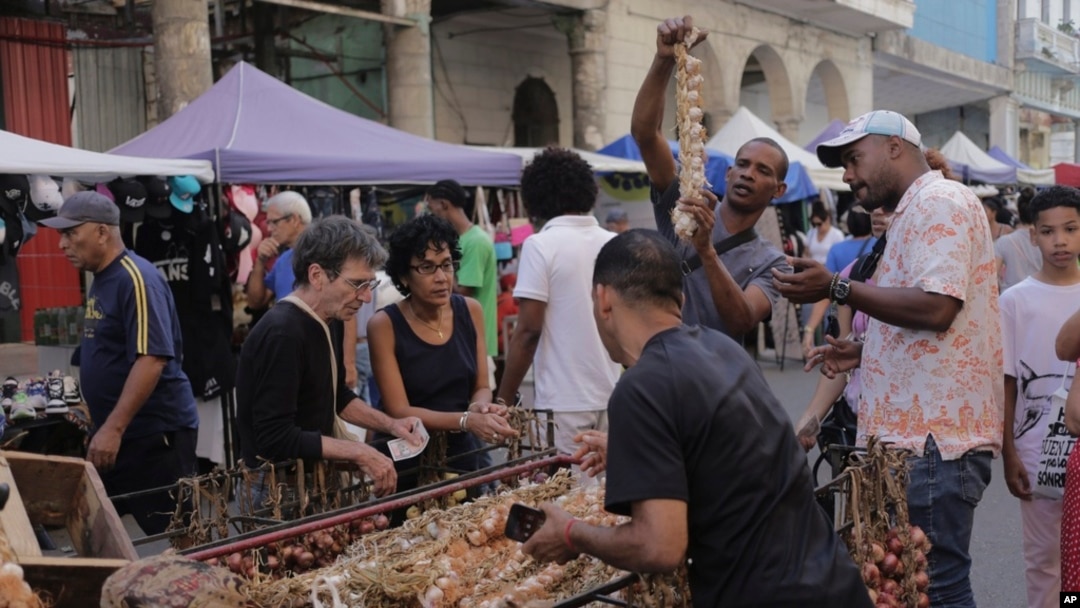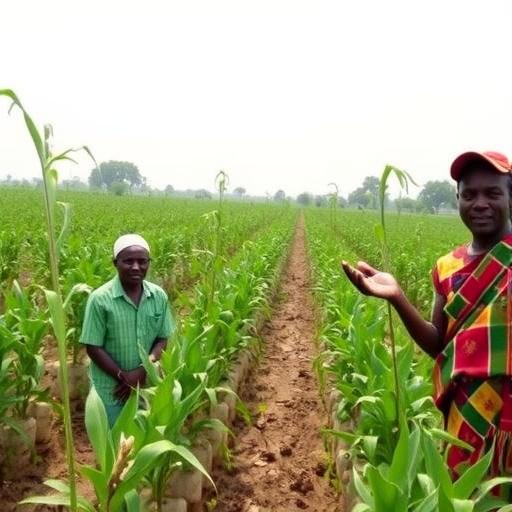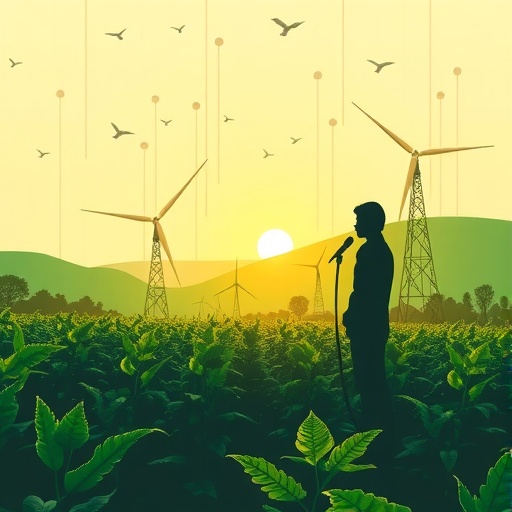Cuban Government Blames USA for Its Agricultural Crisis – Havana Times

Report on Cuba’s Agricultural Crisis and its Implications for Sustainable Development Goals
Executive Summary
An analysis of Cuba’s agricultural and food crisis reveals a significant disconnect between the government’s official narrative and empirical data. While Cuban officials attribute the crisis solely to United States sanctions, evidence points to deep-seated internal failures, including flawed economic policies, misaligned investment priorities, and structural inefficiencies. These domestic issues represent a profound challenge to Cuba’s progress on the 2030 Agenda for Sustainable Development, particularly impacting SDG 1 (No Poverty), SDG 2 (Zero Hunger), and SDG 8 (Decent Work and Economic Growth).
SDG 2: Zero Hunger – A Goal in Crisis
Official Commitments vs. On-the-Ground Reality
At the Second UN Summit on Food Systems (UNFSS+4), Deputy Prime Minister Jorge Luis Tapia affirmed Cuba’s commitment to combating hunger and poverty. However, this statement is contradicted by the nation’s severe food insecurity. The crisis is not primarily an issue of access to external markets but one of internal production collapse and systemic mismanagement, directly undermining the targets of SDG 2.
Key Indicators of Failure to Achieve Zero Hunger
- Production Collapse: National agricultural production has fallen by over 67%, creating a critical food deficit.
- Import Dependency: Over 80% of the food consumed in Cuba is imported, indicating a failure to build resilient and sustainable local food systems.
- Staple Crop Failure: The production of rice, a dietary staple, plummeted to just 11% of national demand in 2024, a drastic reduction from previous years.
- State Control and Inequity: The food system is increasingly controlled by GAESA, a military-run conglomerate, leading to a privatized and dollarized distribution model that exacerbates inequality and limits access for the general population.
Systemic Barriers to Sustainable Development
Misaligned Investment and Economic Policy
The Cuban government’s investment patterns are inconsistent with its stated goal of food security and its commitments under the SDGs. This misalignment perpetuates a cycle of low productivity and economic decline, hindering progress on multiple fronts.
- Investment Disparity: In 2024, investment in tourism was 14 times greater than in agriculture (37.4% vs. 2.7% of total investment), despite hotel occupancy falling to 23%. This prioritizes a declining sector over the critical needs of food production, challenging the principles of SDG 9 (Industry, Innovation, and Infrastructure).
- Economic Contraction: The Gross Domestic Product (GDP) contracted by 1.1% in 2024, with primary production (agriculture) suffering a 53% decline. This demonstrates a failure to foster sustainable economic growth as outlined in SDG 8.
- Failed Agricultural Policies: A package of 63 measures implemented in 2021 to boost agriculture failed to produce the expected results, as acknowledged by the government, highlighting institutional weaknesses that contravene SDG 16 (Peace, Justice and Strong Institutions).
Impact on SDG 1 (No Poverty) and SDG 8 (Decent Work)
The agricultural crisis is a direct driver of poverty and poor working conditions, representing a significant regression from SDG 1 and SDG 8.
- Rising Poverty: Studies indicate that a substantial portion of the Cuban population lives in poverty, with estimates ranging from 40% to as high as 89% in 2024.
- Precarious Conditions for Farmers: Agricultural producers face systemic obstacles, including significant payment delays from the state, bureaucratic impediments, and a lack of fuel, parts, and supplies. These conditions undermine the right to decent work.
Unaddressed Demands for Agricultural Reform
In 2020, independent farmers proposed a five-point plan to revitalize the agricultural sector. The government’s failure to consider these reforms demonstrates a lack of partnership with key stakeholders, a principle of SDG 17. The proposals, essential for achieving sustainable production under SDG 12, include:
- Ending the centralized state purchasing system to allow farmers to sell freely.
- Allowing market-based pricing to incentivize production.
- Authorizing direct international trade for producers without state intermediaries.
- Implementing a ten-year tax moratorium to encourage reinvestment in infrastructure and technology.
- Granting permanent private property titles on land to facilitate credit and investment.
Re-evaluating the Role of External Sanctions
Analysis of US-Cuba Trade Data
The narrative blaming US sanctions as the sole cause of the food crisis is not supported by trade data. The United States remains a major food supplier to Cuba, indicating that the primary obstacles to food security are internal.
- Legal Food Trade: The direct sale of US agricultural products to Cuba is permitted and occurs regularly.
- Significant Imports from the US: In May 2025 alone, Cuba imported $37 million in agricultural products from the US. Total food and agricultural imports from the US reached $205 million between January and May 2025.
- Record Chicken Imports: In 2024, the value of chicken imported from the US exceeded $300 million, a historic record.
- Long-Term Trade: Since 2001, Cuba has purchased approximately $8 billion in agricultural and food products from the US.
This data confirms that the inability to feed the population is rooted in the collapse of domestic production and a dysfunctional economic model, not a complete inability to procure food internationally.
1. Which SDGs are addressed or connected to the issues highlighted in thearticle?
The following SDGs are addressed in the article:
- SDG 1: No Poverty – The article directly discusses the rise of extreme poverty in Cuba, citing specific percentages of the population affected.
- SDG 2: Zero Hunger – This is the central theme of the article, which details Cuba’s “agricultural and food crisis,” issues of food insecurity, declining national food production, and dependence on imports.
- SDG 8: Decent Work and Economic Growth – The article touches upon economic contraction, declining GDP, and a distorted investment pattern that neglects productive sectors like agriculture in favor of a declining tourism industry.
- SDG 9: Industry, Innovation and Infrastructure – The text highlights the lack of investment in agricultural infrastructure, including the need for machinery, irrigation systems, and technology, which are essential for a productive agricultural sector.
- SDG 16: Peace, Justice and Strong Institutions – The article points to systemic failures of governance, such as a centralized state-controlled economic model, lack of private property rights for farmers, and bureaucratic obstacles that stifle production and development.
2. What specific targets under those SDGs can be identified based on the article’s content?
-
SDG 1: No Poverty
- Target 1.2: By 2030, reduce at least by half the proportion of men, women and children of all ages living in poverty in all its dimensions according to national definitions. The article highlights this issue by stating, “extreme poverty in Cuba engulfed up to 89% of the population in 2024,” and provides another estimate that “between 40 and 45% of the Cuban population is in a situation of poverty.”
-
SDG 2: Zero Hunger
- Target 2.1: By 2030, end hunger and ensure access by all people, in particular the poor and people in vulnerable situations, including infants, to safe, nutritious and sufficient food all year round. The article describes a “food crisis” and notes the government’s inability “to establish an agricultural sector capable of meeting all the food demands of our population.”
- Target 2.3: By 2030, double the agricultural productivity and incomes of small-scale food producers. The article discusses the severe decline in production, such as rice production falling to “merely 11% of national demand,” and highlights farmers’ demands for policies that would allow them to increase production and income.
- Target 2.4: By 2030, ensure sustainable food production systems and implement resilient agricultural practices. The article mentions the need for “strategies leading to the sustainable development of the sector” and the lack of essential inputs like “fertilizers, pesticides, energy inputs, machinery… and irrigation systems.”
- Target 2.c: Adopt measures to ensure the proper functioning of food commodity markets and their derivatives and facilitate timely access to market information, including on food reserves, in order to help limit extreme food price volatility. This is reflected in the farmers’ demand to “allow farmers to set prices according to supply and demand” and end the “centralized state food products purchasing system” that forces them to sell at “absurdly low prices.”
-
SDG 8: Decent Work and Economic Growth
- Target 8.1: Sustain per capita economic growth in accordance with national circumstances. The article points to a failure to meet this target by stating, “2024 closed with a contraction of 1.1% in gross domestic product (GDP).”
- Target 8.2: Achieve higher levels of economic productivity through diversification, technological upgrading and innovation, including through a focus on high-value added and labour-intensive sectors. The article critiques the government’s “investment pattern that relegates agriculture to the sidelines,” with a “53% decline” in primary production, while prioritizing a less productive tourism sector.
-
SDG 9: Industry, Innovation and Infrastructure
- Target 9.1: Develop quality, reliable, sustainable and resilient infrastructure… to support economic development and human well-being. The farmers’ demand for a tax moratorium to “reinvest in infrastructure, technology, and machinery” and the government’s failure to provide these items directly relate to this target.
-
SDG 16: Peace, Justice and Strong Institutions
- Target 16.3: Promote the rule of law at the national and international levels and ensure equal access to justice for all. The farmers’ demand to be granted “permanent property titles on land and equipment” points to a lack of strong institutions that protect property rights, which is a fundamental aspect of the rule of law for economic development.
3. Are there any indicators mentioned or implied in the article that can be used to measure progress towards the identified targets?
-
For SDG 1 (No Poverty)
- Indicator 1.2.1 (Proportion of population living below the national poverty line): The article provides two direct data points for this indicator: the Cuban Human Rights Observatory’s finding that “extreme poverty in Cuba engulfed up to 89% of the population in 2024,” and sociologist Mayra Espina’s estimate that “between 40 and 45% of the Cuban population is in a situation of poverty.”
-
For SDG 2 (Zero Hunger)
- Indicator 2.1.2 (Prevalence of moderate or severe food insecurity in the population): This is strongly implied through descriptions of the “food crisis,” the fact that “more than 80% of the food consumed is imported,” and that essential foods like chicken have become “inaccessible to many households” due to scarcity and high prices.
- Indicator 2.3.1 (Volume of production per labour unit / agricultural productivity): The article provides specific data on the decline in rice production: “In 2024, Cuba barely managed to harvest around 80,000 tons, equivalent to merely 11% of national demand. Six years ago, that figure was over three times higher.” This serves as a direct measure of falling productivity.
- Indicator 2.c.1 (Indicator of food price anomalies): This is implied by the farmers’ demand to end the state purchasing system where they are forced to sell “at absurdly low prices” and their call to “allow farmers to set prices according to supply and demand.” This points to significant state-induced price distortions.
-
For SDG 8 (Decent Work and Economic Growth)
- Indicator 8.1.1 (Annual growth rate of real GDP per capita): The article provides a direct figure for the overall economy, stating that “2024 closed with a contraction of 1.1% in gross domestic product (GDP).”
- Indicator 8.2.1 (Annual growth rate of real GDP per employed person): A sharp decline in this indicator for the agricultural sector is shown by the data that “Primary production (agriculture, cattle, and mining) has been the most affected, with a 53% decline.”
-
For SDG 9 (Industry, Innovation and Infrastructure)
- A proxy for Indicator 9.a.1 (Total official international and domestic support to infrastructure): The article provides data on domestic investment allocation, which serves as an indicator of government priorities. It states the government “invested 14 times more in tourism… than in agriculture – 37.4% of the total investment versus 2.7%.” This demonstrates the low level of investment in agricultural infrastructure.
-
For SDG 16 (Peace, Justice and Strong Institutions)
- Qualitative indicator related to property rights: The demand to “grant permanent property titles on land and equipment” serves as a qualitative indicator. The absence of this right, as described in the article, indicates a weakness in institutional frameworks that are essential for progress.
4. Table of SDGs, Targets, and Indicators
| SDGs | Targets | Indicators Identified in the Article |
|---|---|---|
| SDG 1: No Poverty | 1.2: Reduce poverty in all its dimensions. | Proportion of population in poverty: “up to 89%” or “between 40 and 45%.” |
| SDG 2: Zero Hunger | 2.1: End hunger and ensure access to food. | Prevalence of food insecurity: Implied by “food crisis,” high dependence on imports (80%), and inaccessibility of basic foods. |
| 2.3: Double agricultural productivity. | Agricultural productivity: Rice production at only “11% of national demand,” a significant drop from six years prior. | |
| 2.4: Ensure sustainable food production systems. | Lack of sustainable practices: Indicated by the absence of “fertilizers, pesticides, energy inputs, machinery… and irrigation systems.” | |
| 2.c: Ensure proper functioning of food commodity markets. | Food price anomalies: State forces farmers to sell at “absurdly low prices” instead of market-based prices. | |
| SDG 8: Decent Work and Economic Growth | 8.1: Sustain per capita economic growth. | Annual GDP growth rate: Negative growth reported as a “contraction of 1.1% in gross domestic product (GDP).” |
| 8.2: Achieve higher economic productivity through diversification. | Sectoral productivity decline: “Primary production (agriculture…)” experienced a “53% decline.” | |
| SDG 9: Industry, Innovation and Infrastructure | 9.1: Develop quality, reliable, sustainable and resilient infrastructure. | Investment in infrastructure: Only 2.7% of total investment allocated to agriculture, versus 37.4% for tourism. |
| SDG 16: Peace, Justice and Strong Institutions | 16.3: Promote the rule of law and ensure equal access to justice. | Lack of property rights: Farmers’ demand for “permanent property titles on land and equipment” highlights an institutional failure. |
Source: havanatimes.org

What is Your Reaction?
 Like
0
Like
0
 Dislike
0
Dislike
0
 Love
0
Love
0
 Funny
0
Funny
0
 Angry
0
Angry
0
 Sad
0
Sad
0
 Wow
0
Wow
0












































































